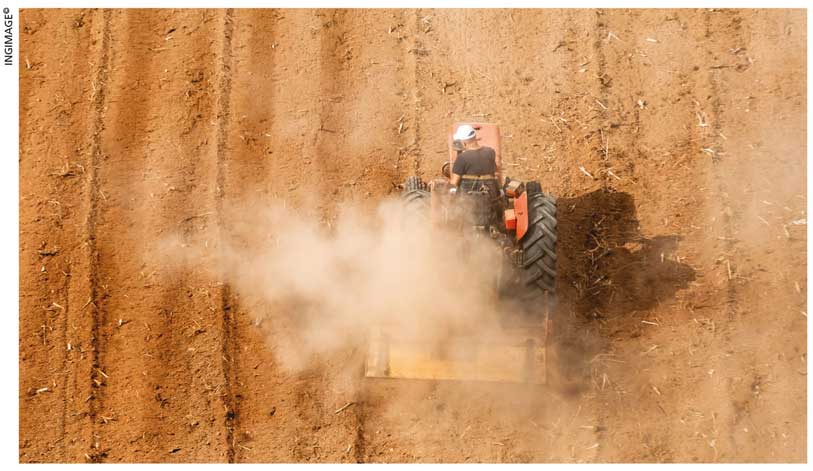FOOD INSECURITY

SUPPLY CHAIN DISRUPTIONS
Akila Wijerathna discusses the imminent food crisis as a result of COVID-19

A multiagency report titled ‘The State of Food Security and Nutrition in the World 2021’ prepared by the FAO, International Fund for Agricultural Development (IFAD), UNICEF, World Food Programme (WFP) and WHO estimates that around one on 10 of the global population (some 811 million people)
were undernourished in 2020.
The number suggests it will take a tremendous effort for the world to honour its pledge to end hunger by 2030. And the World Bank (WB) warns that “if farmers are experiencing acute hunger, they may also prioritise consuming seeds as food today, over planting seeds for tomorrow, raising the threat of food shortages later on.”
Moreover, the pandemic continues to expose weaknesses in our food systems, which threaten the lives and livelihoods of people across the world. The relationship between COVID-19 and food prices is not straightforward. The size of these impacts depends on the severity of the drop in global GDP among other factors.
Based on two scenarios for economic growth recovery, this month’s column describes how the economic shock from the pandemic could reverberate through the agriculture indus-try over the next decade.
The loss of incomes and rising unemployment (from lockdowns and restrictions on movement) have put pressure on food prices as families reduce their expenditure on food.
At the same time, COVID-19 and measures to contain the virus have disrupted food supply chains, labour mobility, and the availability of inputs such as seeds and fertiliser. This in turn has undermined accessibility to food, and increased the cost of production, transport and prices.
Up to 80 percent of the labour force in low income countries works in agri-food, mainly on farms. In high income countries, the proportion is still about 10 percent – more than half of these are ‘off the farm’ in related food sectors and services, and many of them are migrant workers.
Limits on mobility across borders and lockdowns are contributing to labour shortages in the agriculture industry in many countries, particularly those characterised by periods of peak seasonal labour demand or labour-intensive production.
Measures to contain the spread of COVID-19 are causing delays and disruptions to transport and logistics services. Port closures pose a problem too when products have to be diverted from one port to another or a different importing country altogether.
Getting food to where it’s needed will require flexible and robust supply chains that can respond to shifts in consumer demand, and adjust to supply constraints arising from measures implemented in response to the pandemic.
On the other hand, disruptions downstream from the farms sometimes cause surpluses to accumulate, putting a strain on storage facilities and increasing food losses in the case of highly perishable items.
In addition, closing borders potentially hampers seed supply chains and on time delivery of seeds. This has a negative impact on agriculture, feed and food production over the next season, and further into the future.
Facilitating the movement of perishable products across borders will reduce food loss and waste related to handling difficulties, while border checks could impact the access to essential agricultural inputs such as pesticides and veterinary medicines.
It is vital to explore ways to maintain transport links to the extent possible to facilitate the movement of food products, and ensure that farmers have access to input and output markets. Cooperation with private stakeholders to identify and address bottlenecks for the smooth functioning of food supply chains is vital.
One must also work with the private sector to find alternative supply channels to handle potential surpluses, food loss and waste that have resulted from the closure of restaurants, schools, hotels and catering businesses.
The pandemic may have implications for food loss and waste in the short and medium terms. Supply chain losses may increase in the short term because of logistical bottlenecks and a contraction in demand for perishables. In addition, consumer waste may increase due to hoarding and panic buying.
This food insecurity crisis is negatively impacting a cross section of women in smallholder farming and food production. Therefore, it’s essential to understand how the pandemic affects food security and agriculture more broadly to ensure optimal gender sensitive social protection responses. Governments are adopting farm, trade and social protection policies in response to the crisis.
The extent of damage to food security, nutrition, and livelihoods of farmers, fishers and others along the food supply chain will depend largely on policy responses over the short, medium and long terms.
In the short term, governments must manage multiple demands that include responding to the global health crisis, managing consequences of the shock to the economy and ensuring the smooth functioning of the food chain.





Leave a comment